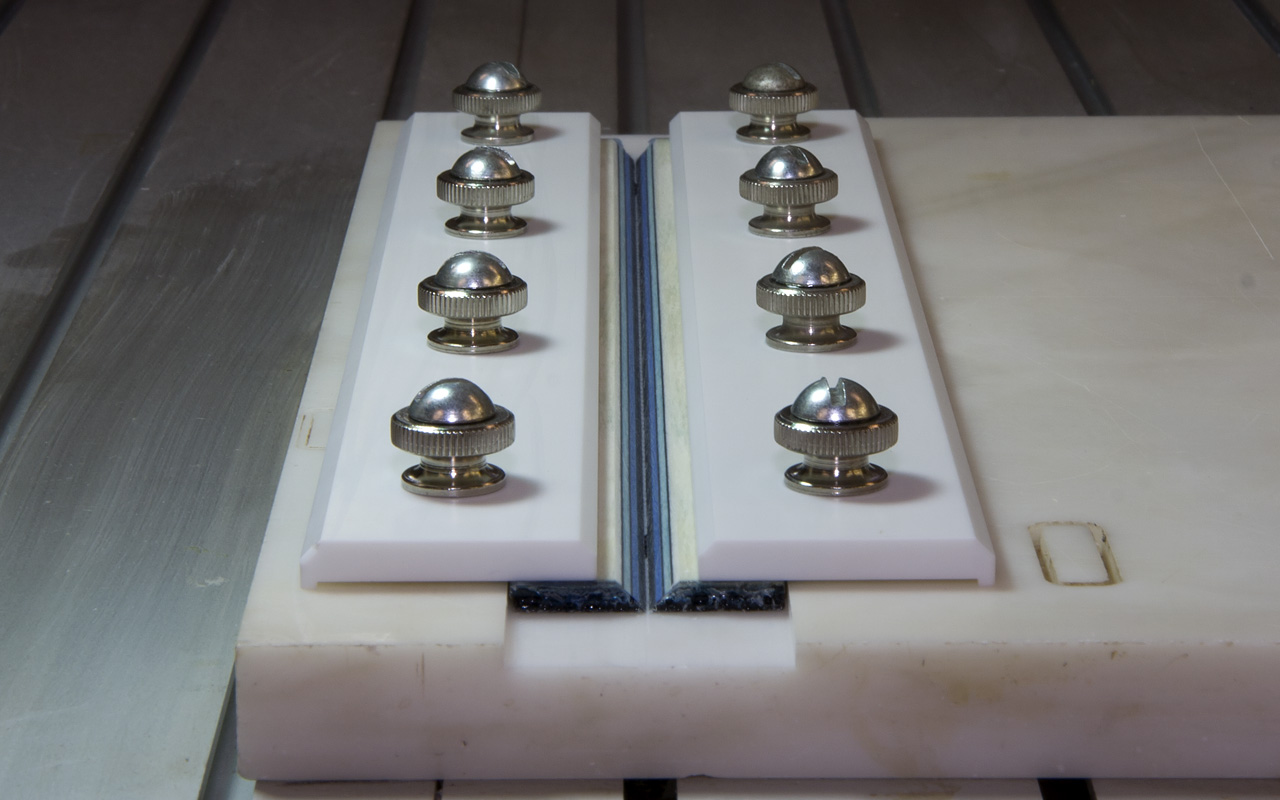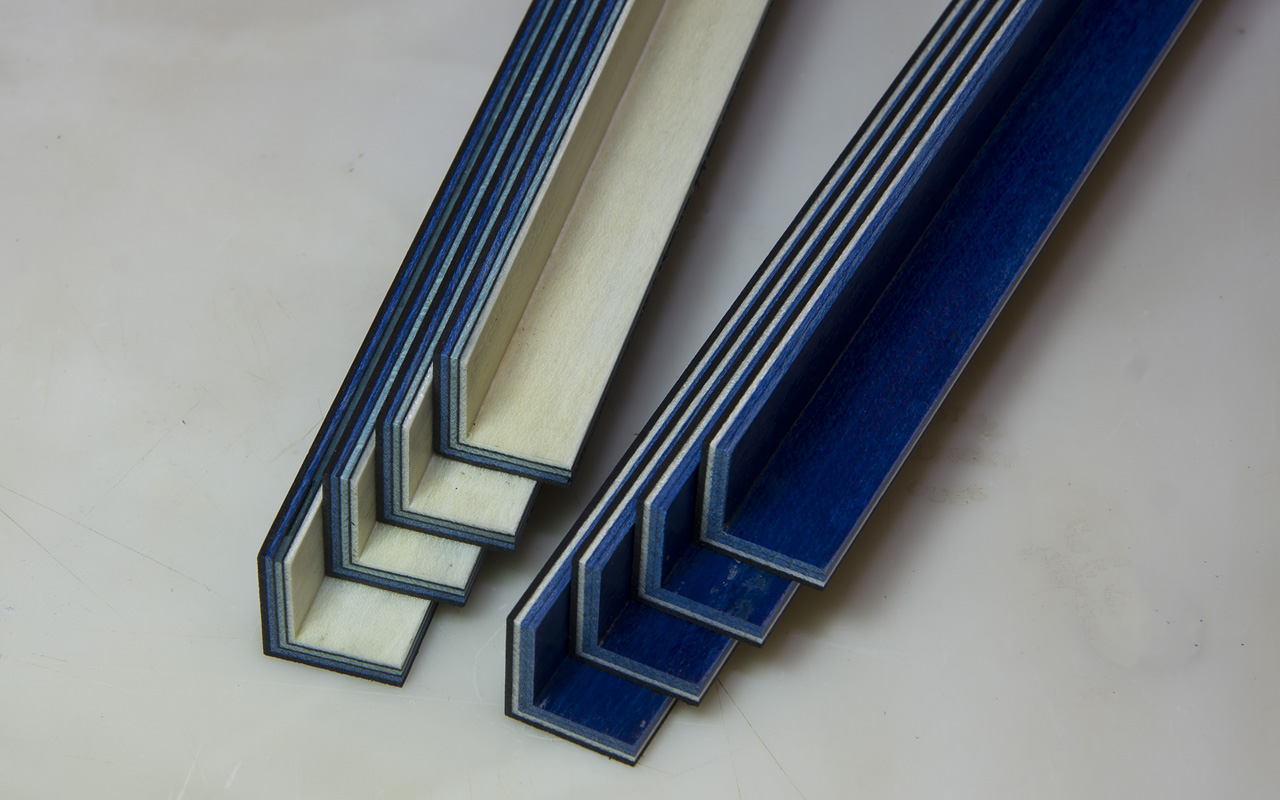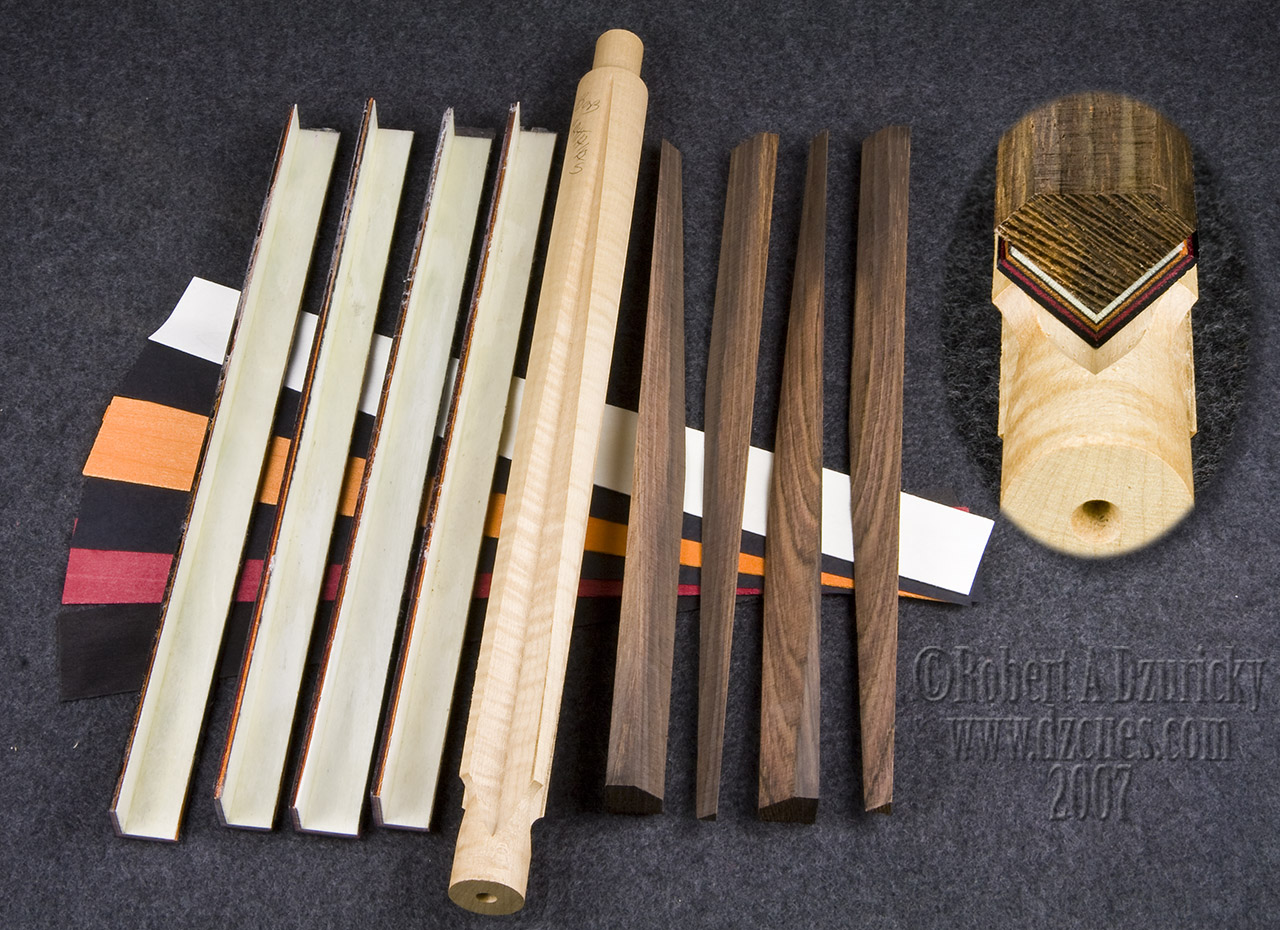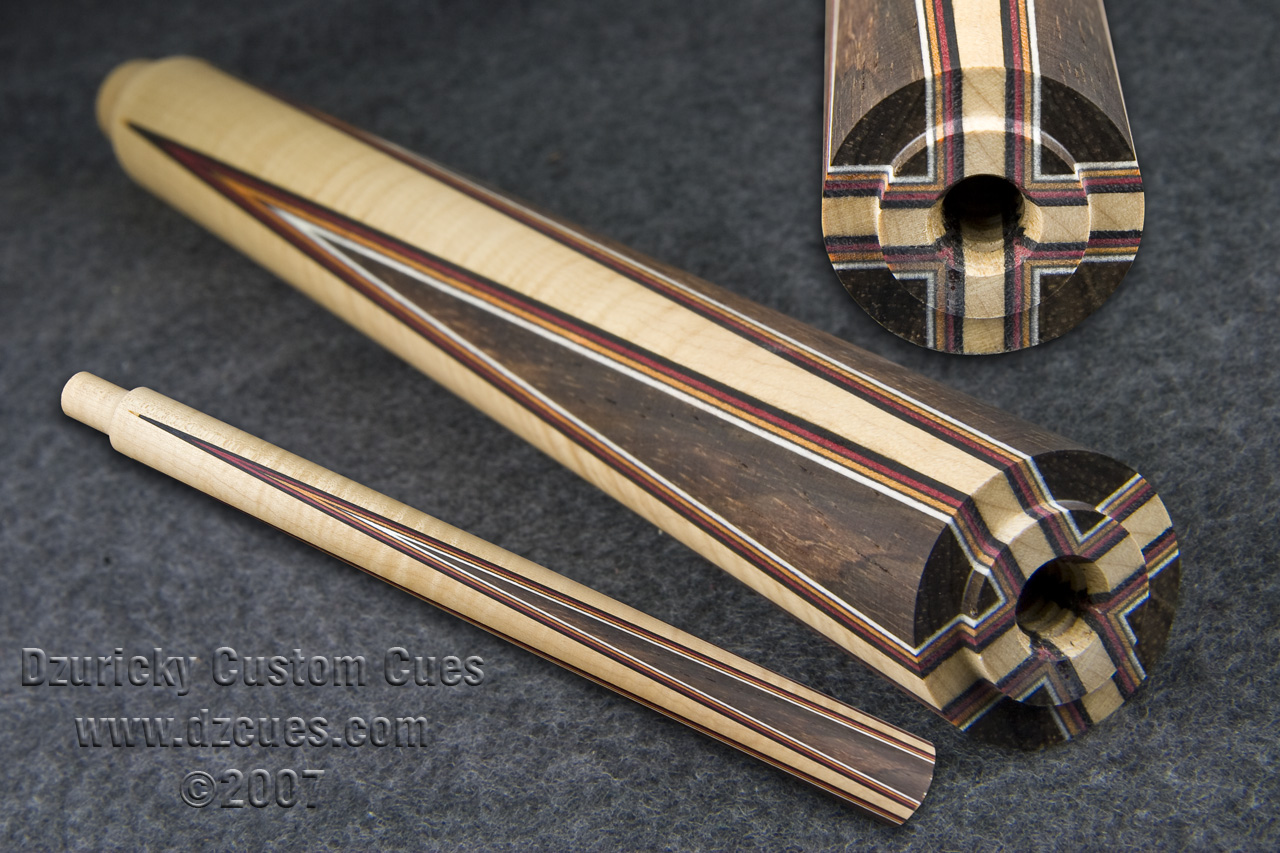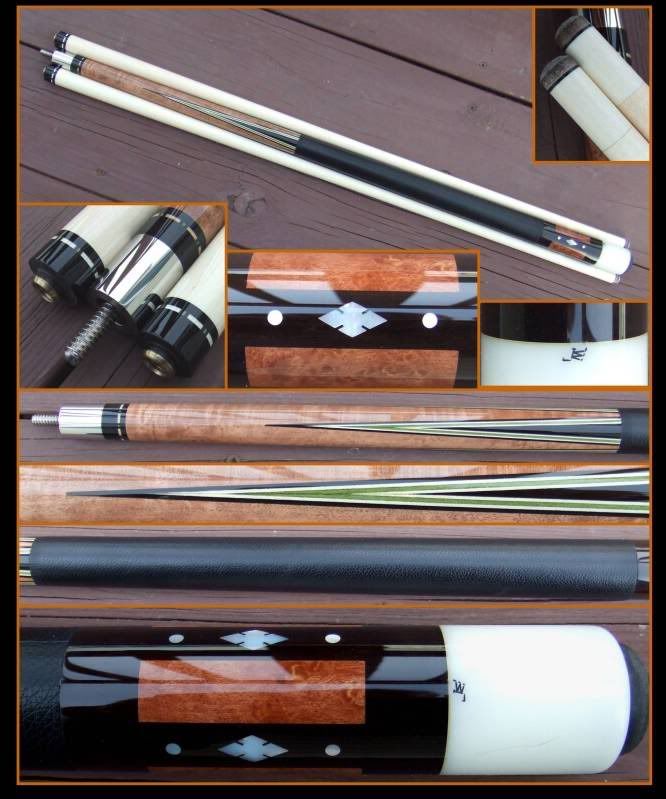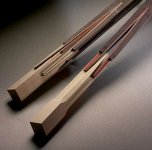I know my way around a cue pretty well, but I am certainly no expert. I would like to increase my knowledge though.
First: What are knifed in points? I am guessing it is a certain technique of inlaying points, but I am not sure. So, what is this, and can it be done on full-splice cues, or is it only for inlayed points? What are the advantages of knifed in points?
Second: I know what recuts look like on a cue, but I do not understand what they are exactly?
Third: What are the different types of techniques for adding veneers? I understand gluing them together, but I think there are other ways of doing it. Can you inlay a whole point and then cut another channel to inlay another into it, and so on? Which methods are the best for playability, if any?
Fourth: What advantages does coring the forearm and handle offer? If it changes the hit, how so? Less vibration?
These are all the questions I can think of at the moment. If I think of more, I will add them. Thank you very much for any information given here.
Note: I am not, nor ever will be, a cue maker. This is only to further my knowledge of cues, which I truly love. Thanks.
Braden Kearney
First: What are knifed in points? I am guessing it is a certain technique of inlaying points, but I am not sure. So, what is this, and can it be done on full-splice cues, or is it only for inlayed points? What are the advantages of knifed in points?
Second: I know what recuts look like on a cue, but I do not understand what they are exactly?
Third: What are the different types of techniques for adding veneers? I understand gluing them together, but I think there are other ways of doing it. Can you inlay a whole point and then cut another channel to inlay another into it, and so on? Which methods are the best for playability, if any?
Fourth: What advantages does coring the forearm and handle offer? If it changes the hit, how so? Less vibration?
These are all the questions I can think of at the moment. If I think of more, I will add them. Thank you very much for any information given here.
Note: I am not, nor ever will be, a cue maker. This is only to further my knowledge of cues, which I truly love. Thanks.
Braden Kearney
Last edited:
